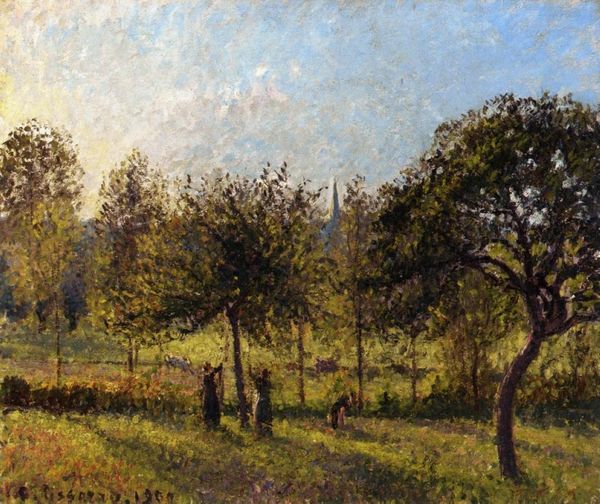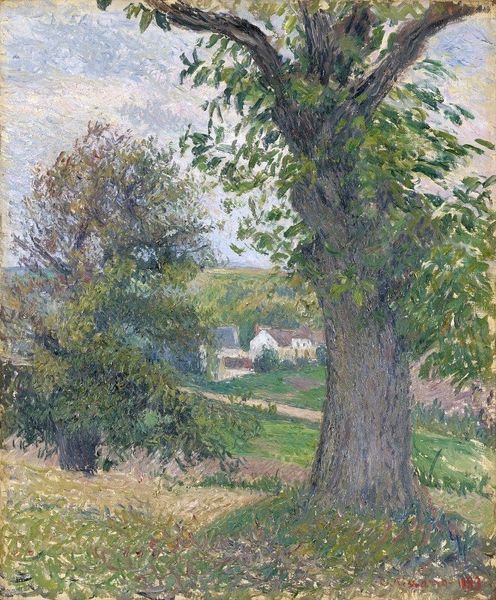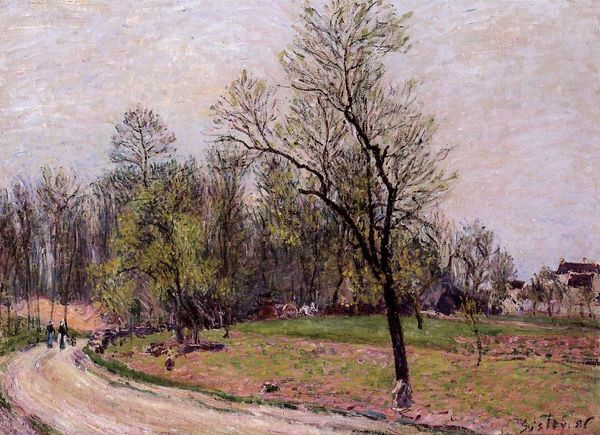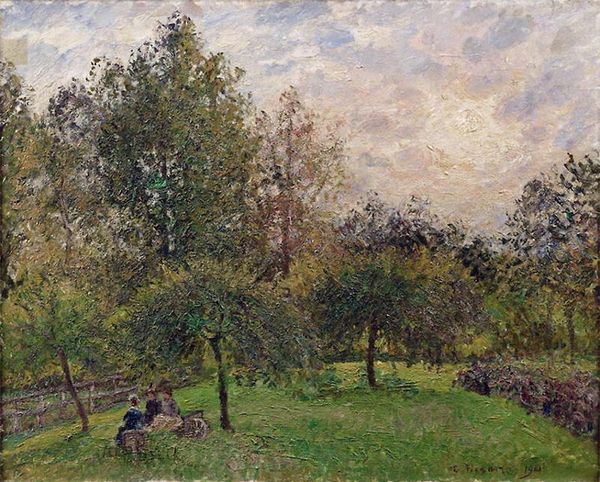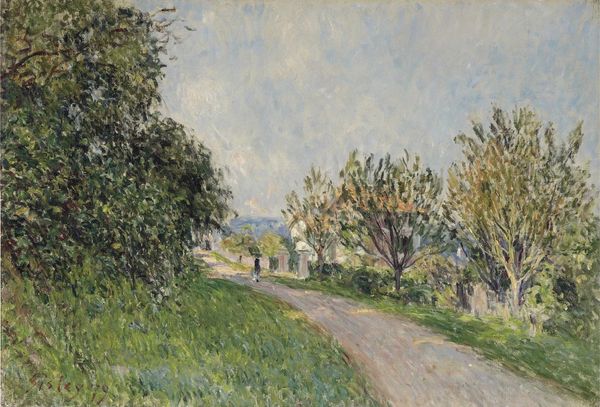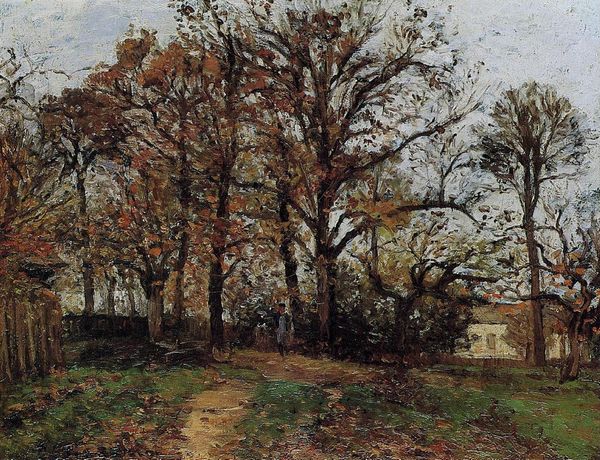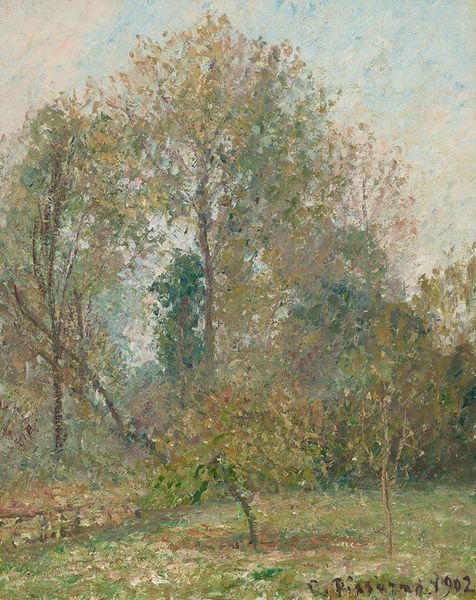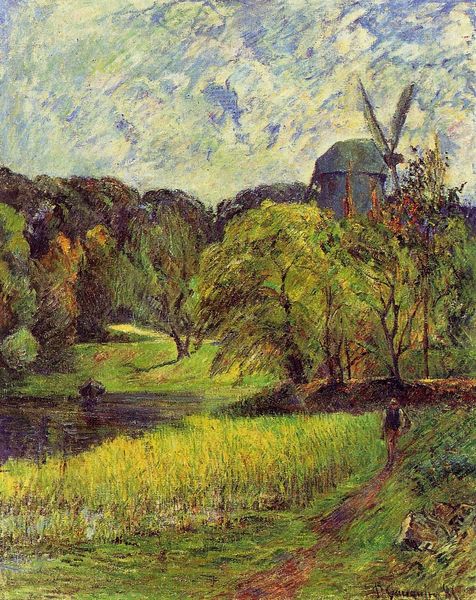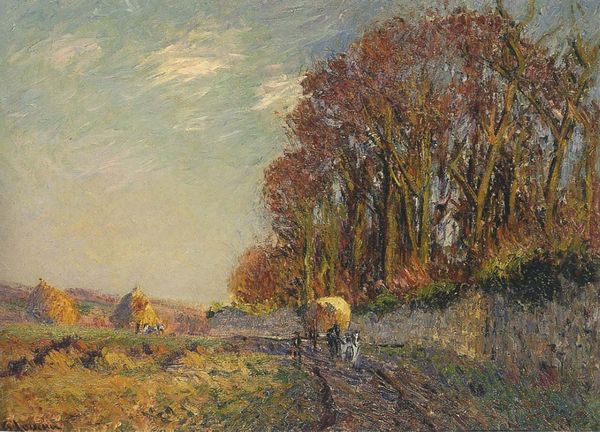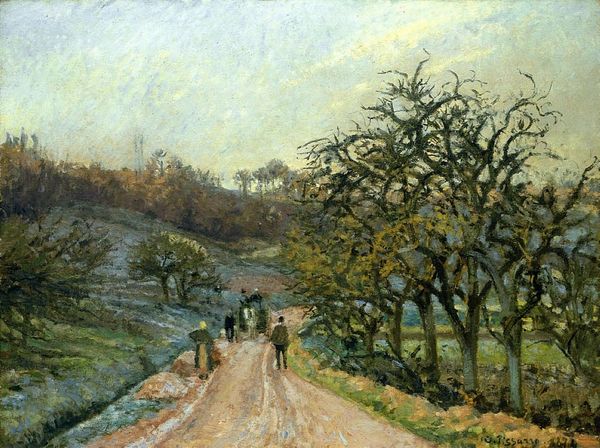
painting, plein-air, oil-paint
#
portrait
#
tree
#
painting
#
impressionism
#
impressionist painting style
#
plein-air
#
oil-paint
#
landscape
#
leaf
#
impressionist landscape
#
nature
#
oil painting
#
nature
Copyright: Public domain
Editor: This is "The Little Bridge, Pontoise," painted by Camille Pissarro in 1875. It's an oil on canvas, depicting a scene that feels both familiar and dreamlike. I am struck by the contrast between the defined foreground and the almost hazy background. What elements of visual composition do you find most compelling here? Curator: The construction of space is particularly sophisticated. Note how Pissarro utilizes a recessive linear perspective, leading the eye into the composition. The trees act as a framing device, drawing attention to the central, lighter area. This division creates a structured reading of the canvas. Editor: The brushstrokes also seem really important here. They're not blended perfectly, leaving a sense of movement. Curator: Precisely. Pissarro employs broken brushstrokes, a hallmark of Impressionism, to capture the fleeting effects of light and atmosphere. These marks aren't simply descriptive; they're constitutive of the scene itself. Look closely—how would you describe the relationship between color and form here? Editor: It's like the colors define the shapes, rather than the other way around. There is a sense of harmony. Curator: It showcases the artist’s study of optical mixing. Color, in Impressionism, is not just an attribute of objects but a phenomenon of perception, meticulously constructed by the artist through layering. Editor: So it's less about accurately representing the scene, and more about capturing the experience of seeing it? Curator: Yes, and in doing so, revealing how we perceive the world around us through color, light, and form. Pissarro's canvas serves as a reflection on the very nature of vision. Editor: That's fascinating; I hadn't considered the philosophical implications of broken brushstrokes! Curator: Formal analysis allows us to explore the intellectual depth encoded within the visible surface.
Comments
No comments
Be the first to comment and join the conversation on the ultimate creative platform.
